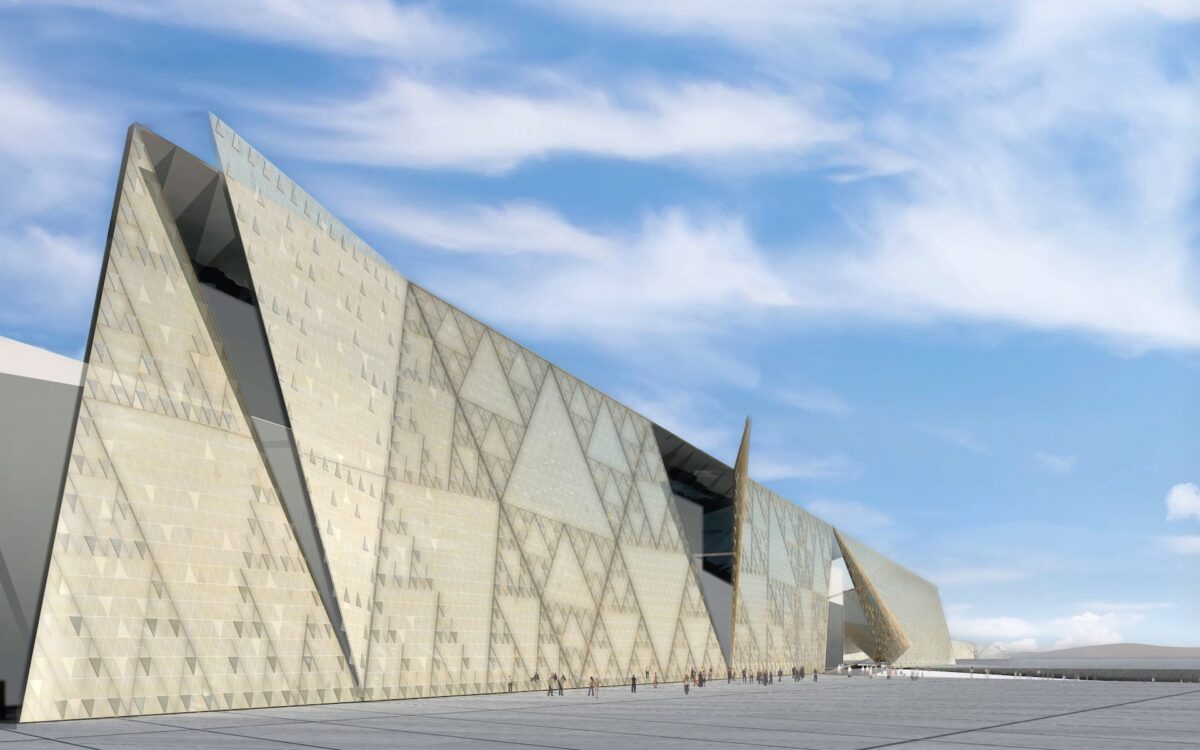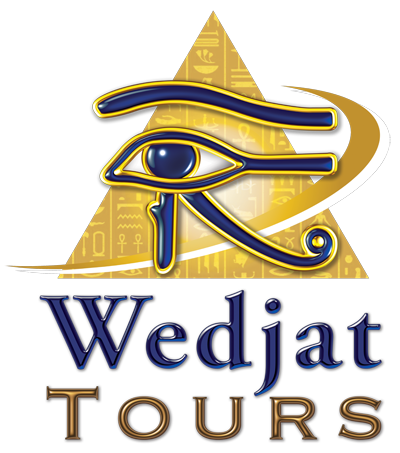When it is completed, the Grand Egyptian Museum just outside of Cairo on the Giza Plateau (and next door to the Pyramids) will not only be the new crown jewel of Egypt, but it will also be one of the largest, most modern, and most renowned museums in the entire world.
The ceremonial cornerstone of the Grand Egyptian Museum was laid in early 2002, although at this point no architectural or construction firms had been selected yet to build the new museum complex.
The main contract for the design of the Grand Egyptian Museum was awarded to the Irish architectural firm Heneghan Peng in 2003 after an extensive international competition, but in total a team of 300 people from 13 companies in 6 different countries contributed to the design phase of the project, according to the Egyptian government.
Construction of the Grand Egyptian Museum proceeded in three distinct phases:
Phase I was for what’s known as “enabling works,” which refers to the execution of tasks required to clear and secure the site and prepare it for the construction of buildings.
Phase II saw the construction of a fire station, an energy center to supply electricity and air conditioning to the site, and a world-class conservation center apart from the main museum building.
Phase III involved land excavation and contouring, the construction of the main museum building, and site landscaping.
The original cost of the Grand Egyptian Museum was estimated to be around $500 million, but delays, changes, and other factors have driven the final price tag for the complex to over $1 billion.
One of the first artifacts to be transferred to the Grand Egyptian Museum was an enormous 3,200 year old statue of Ramses II that had previously stood in the middle of a traffic circle in Cairo known as Ramses Square. Despite the new museum being nowhere near completion at the time, the government decided to go ahead and transport the 83-ton statue out to the conservation center in 2006 in order to halt its deterioration amid the pollution that had surrounded it during its five-decade residence in the square. In 2018, the statue was transferred to its final resting place at the GEM’s main entrance.
When everything is finally transferred not only from the current Egyptian Museum’s publicly displayed collections but also from its much more vast private storage areas, the Grand Egyptian Museum will host about 100,000 ancient artifacts, 4,549 of which will be from the tomb of the famous King Tutankhamun.
The Grand Egyptian Museum is expected to welcome around 15,000 visitors per day, roughly three times the number of people who visit the current museum daily. That will amount to more than 5 million visitors per year.





 And then Add to Home Screen.
And then Add to Home Screen.